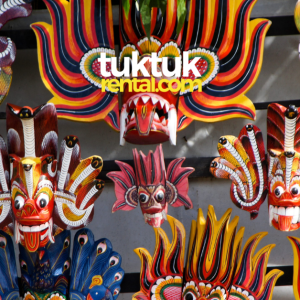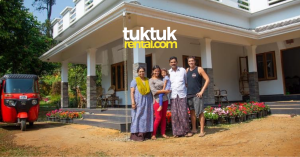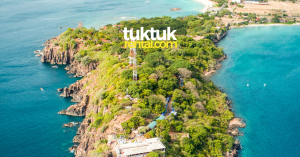Mask making Sri Lanka
Author: Kalpana Sunder
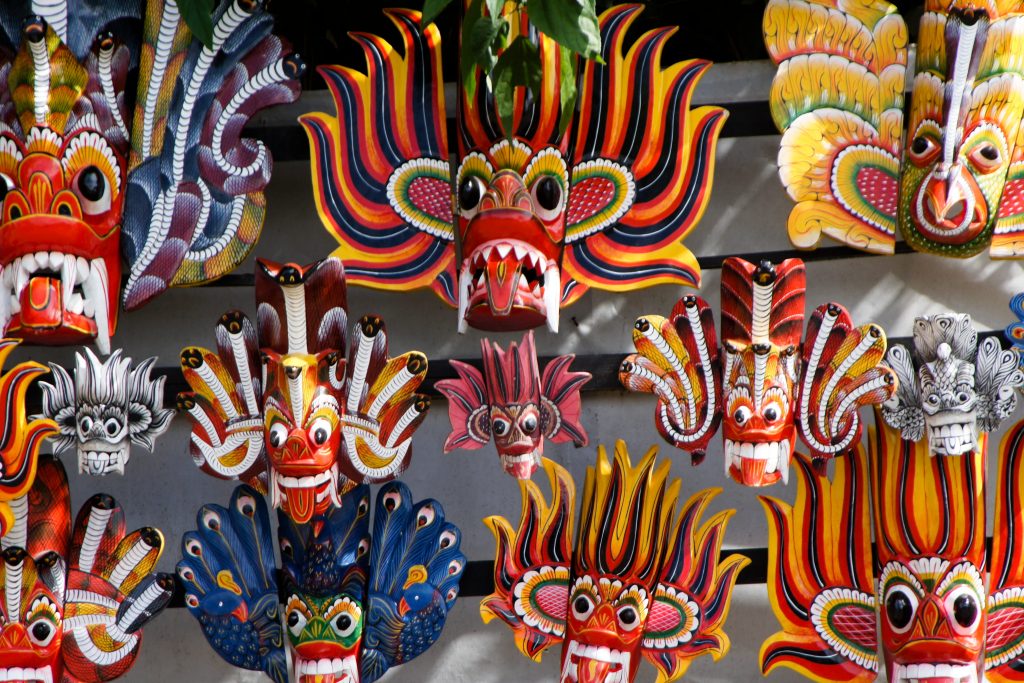
Mask making Sri Lanka is one of the country’s most iconic traditional crafts. This ancient art is deeply rooted in Sri Lankan culture, with masks used for healing rituals, traditional theatre, and even exorcism ceremonies.
Today, the coastal town of Ambalangoda remains the heart of this tradition. Here, artisans carve masks from balsa-like Kaduru wood and lacquer them in vivid hues to create striking designs.
The Art and History of Sri Lankan Masks
As you step into a mask workshop, you’ll notice bloodthirsty faces with sharp fangs, bulging eyes, and even seven-headed serpents. These masks, from demons and deities to mythical birds and serpents, stand out as bold works of art. Furthermore, the history of Sri Lankan masks stretches back to the 15th century. Over time, their role evolved. Once used in pageants, processions, ceremonies, dances, dramas, and puppet shows, they are now also prized souvenirs that attract tourists.
Mask making Sri Lanka | Types of Masks
Masks from Ambalangoda had influential roles thousands of years ago. In fact, villagers used them in devil dancing and exorcism rituals that came from pre-Buddhist beliefs. They also trusted the masks to heal and protect.
Similarly, ‘Kolams’ mix mime, dance, and satire to mock Sri Lanka’s colonial past. Since there were no theatres with lights and sound, people performed them on mounds in paddy fields or on sandy beaches. However, Kolams lost popularity after movies arrived in the 1950s.
Today, a Kolam starts with a drum-beating narrator. Afterwards, characters such as the washerman, headman, king’s guard, soldiers, and villagers from colonial times take the stage. Finally, the ritual ends with Raksha masks that honor 24 forms of Rakshasas—serpents with seven heads, mythical birds, and more. These masks symbolize King Ravana and his demon race from the Ramayana.
Meanwhile, ‘Sanni’ masks, or devil dancing masks, appear in exorcism ceremonies. In Sinhalese tradition, demons called ‘sanni’ cause 18 physical and psychological diseases. For example, one mask represents vomiting and stomach pain, another insanity, and another nightmares.
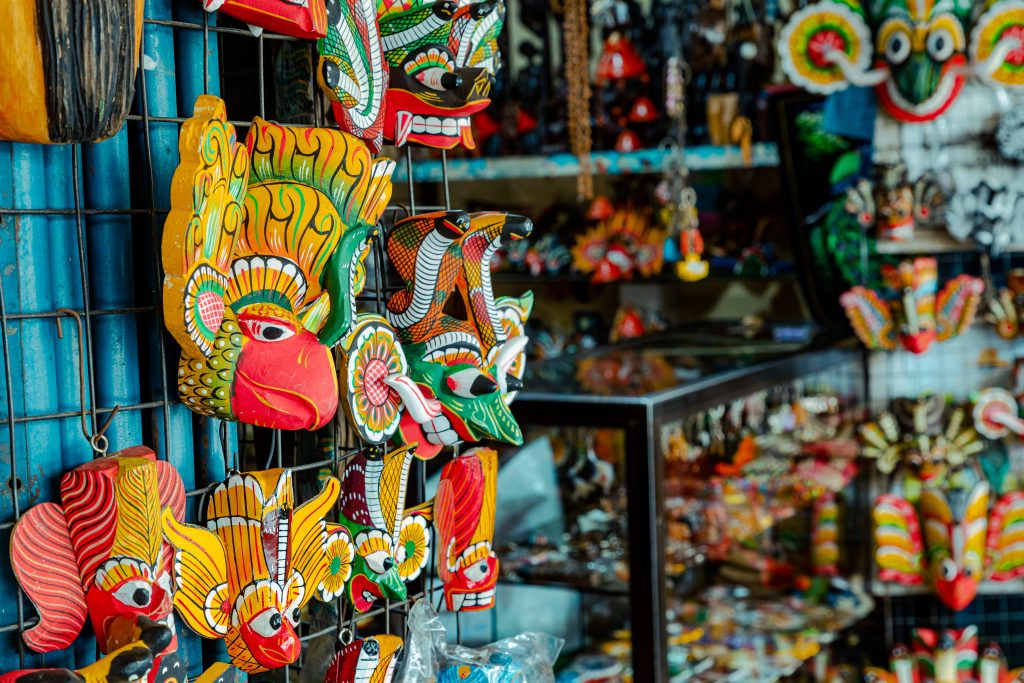
How are they made?
The mask making Sri Lanka process is elaborate and steeped in tradition. First, artisans strip the bark of a tree and cut the trunk into workable pieces. Next, they smoke-dry the wood for a week to prepare it for carving. Then, they whittle it down with traditional tools, hand-carve the shapes, and paint the finished mask.
Meanwhile, artisans follow ancient scriptures that set strict guidelines. They use tools such as a cross-cut saw, hand axe, chisels, ruler, mallet, whetstone, and abrasives. To begin, they sketch the outline of the mask on the wood. After that, they season it by the fireplace for several days so insects cannot damage it. Once ready, they carve with chisels, smooth the surface, and paint with organic and mineral-based pigments. Finally, they craft the ears separately and attach them at the end.
Where to enjoy mask making Sri Lanka
In Ambalangoda, the Mask Museum offers an excellent introduction to this art. Inside, you’ll find a museum, workshop, and library filled with anthropological materials on masked performances. Run by Ariyapala & Sons, the museum reflects five generations of commitment to preserving masks and dance traditions. Today, mask carving has shifted into a cottage industry mainly serving tourism. However, by purchasing a mask, you not only take home a cultural treasure but also help keep this ancient craft alive.
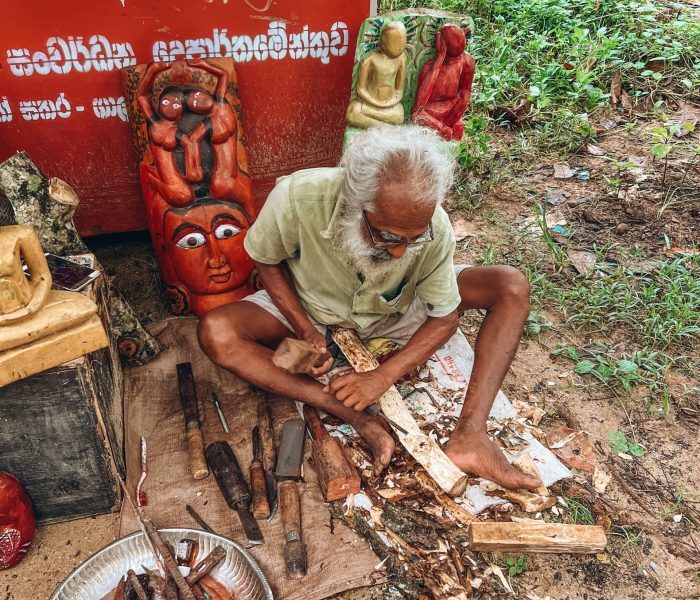
You might also consider downloading the Tuktukrental Travel App. It features offline maps, offbeat recommendations and even helps fellow tuktuk-ers on the road connect for information or just a few post drive beers – or the local Sri Lankan arrack if you are feeling adventurous!

